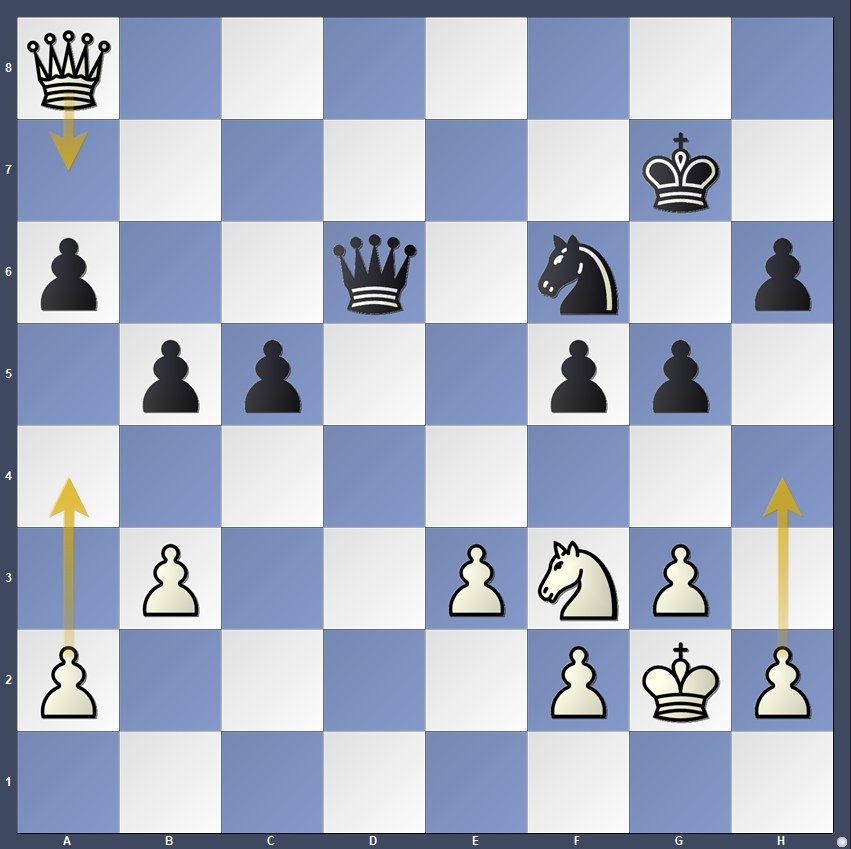
Women’s World Champion Ju Wenjun defeated Challenger Tan Zhongyi with the black pieces to close out the first half of the match with a crucial win. This result marks her third victory in the last four games, giving her a 4–2 lead as the match shifts to Tan’s home city of Chongqing.
When asked yesterday whether the result of today’s game would carry any particular significance, both players emphasized that each game holds equal importance and would be approached accordingly. Yet, considering that it was the final encounter before the halfway mark and two upcoming rest days, it’s fair to conclude that, objectively, this one did matter.
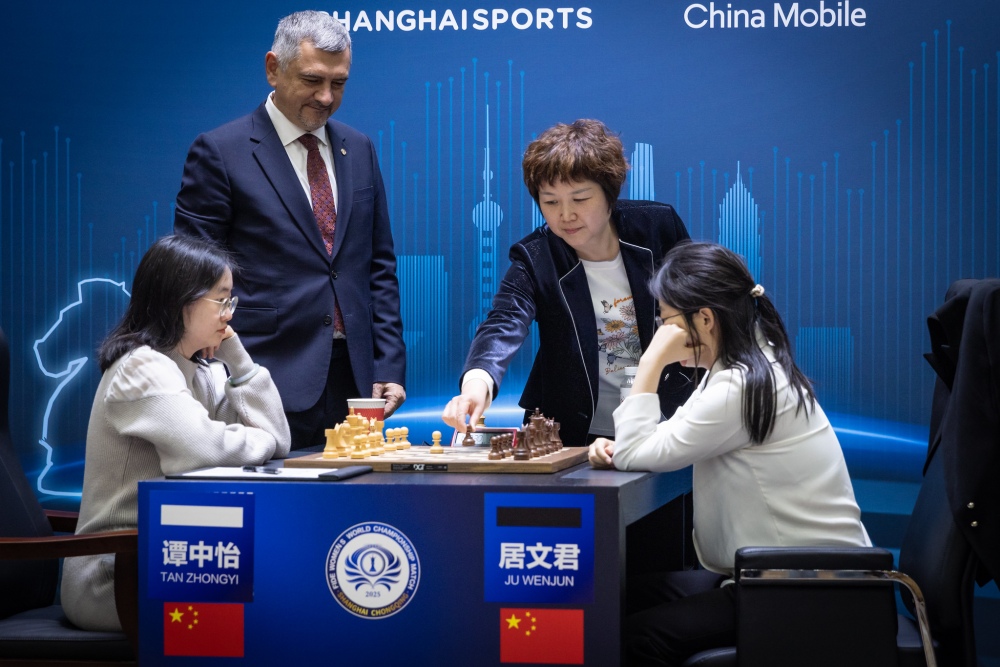
The first ceremonial moves in Game 6 were performed by Zhang Yi, Director of Youth Sports and Education Dept., Shanghai Administration of Sports and Victor Bologan, FIDE Management Board Executive Director.
Once again, the English Opening made an appearance, but this time Tan Zhongyi chose a double fianchetto setup. The opening, however, did not yield a favorable position for White after the challenger opted for 12.Ne5 instead of more natural 12.Na3-c4 played in the game Duda – Anand (Global Chess League, 2023). With straightforward and solid play, Black equalized first and then seized the initiative.
A key weakness in White’s position was her knight on a3. In chess, we are taught the phrase “knights on the rim are dim” (coined by Siegbert Tarrasch in the 19th century) referring to their limited activity on the edge of the board. Though initially, Tan Zhongyi’s knight had good opening prospects, it remained on the edge for far too long, and when it eventually moved, it moved too much, dancing around the board and never finding a good square. Eventually, Black’s initiative turned into a tangible advantage:
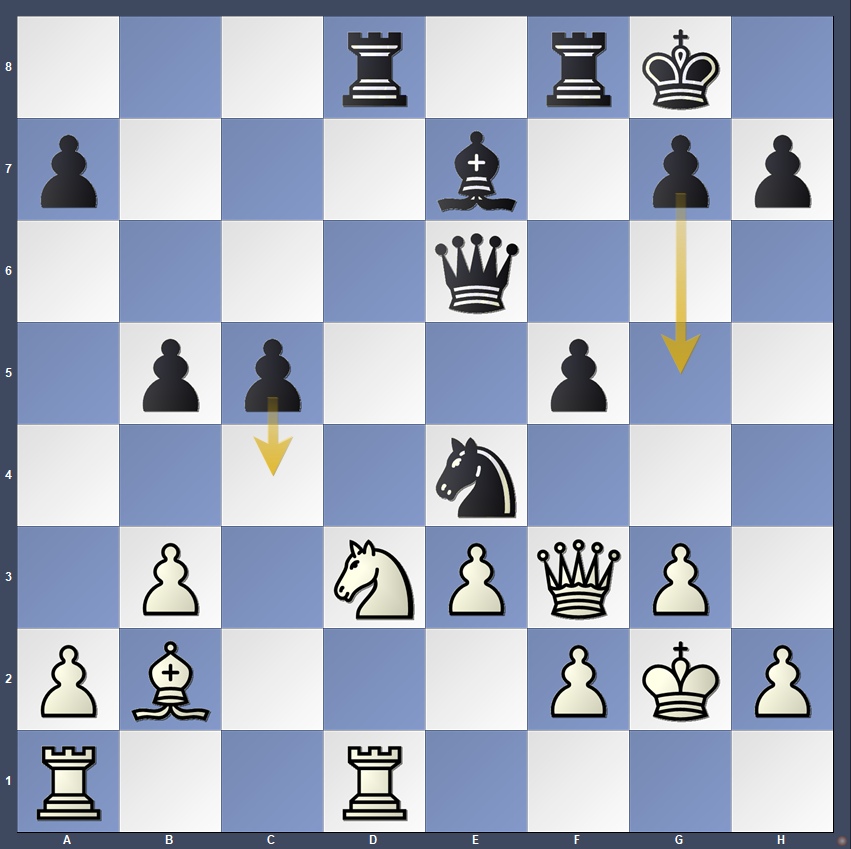
Ju appeared poised to secure her second consecutive point after she played 21…g5! with the idea of grabbing space on the kingside and taking control over the light squares. Not an easy move to find on the board, particularly since Black had many other attractive options in an already comfortable position. It was by far the best move and she made it! Tan blitzed out 22.Ne1 (the best defensive move in the position) and another critical moment arose.
The combination of ideas revolving around g5-g4 and c5-c4 pushes became crucial. On the kingside, Black would control the light squares, preparing the knight’s hop into g5. Meanwhile, on the queenside, the creation of a passed pawn and the threat of pushing c3 loomed. The position was so commanding that FIDE commentator GM Evgenij Mirosnichenko remarked, “Black can even say ‘pass’ in this position and not make a move, and she would still be winning.” And yet, Ju followed up with one of the few moves that allowed White to fully equalize.
22…Bf6?
Although at a glance the bishop on b2 appeared well-placed on the long diagonal, it was, in reality, an ineffective piece, facing little more than empty space. By playing …Bf6, Black gave White the opportunity to exchange this bishop, followed by a series of trades involving the rooks. In a flash, the venom was sucked out of Black’s position. Carrying out Black’s plan with ether 22…g4 or 22…c4 was key to sustaining the advantage, but with those trades, the initiative petered out.
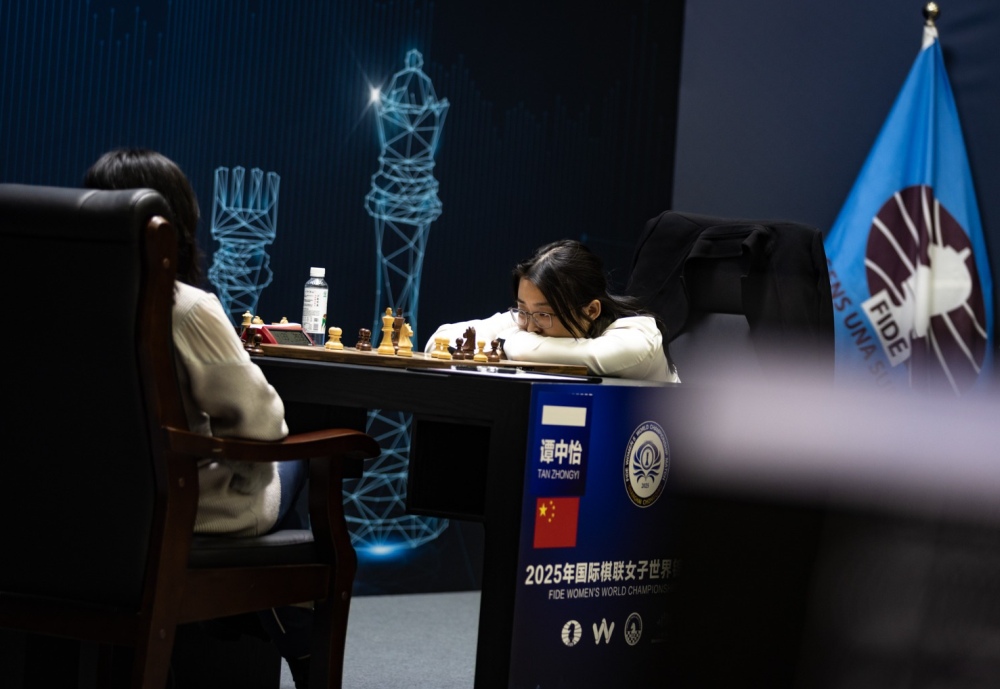
With most pieces removed from the board, Black’s earlier kingside expansion, once strength, became a liability as her king was exposed. Tan wisely kept the queens on the board, a decision that preserved her chances in a position where a knight endgame would have clearly favored Black, thanks to her queenside pawn majority and more active king. The position with queens, knights, and pawns remained balanced and appeared to be heading toward a draw. But in this match, assumptions about outcomes have often proven unreliable. Even seemingly equal positions have been transformed into wins by both players.
Ju Wenjun had faltered in the second game’s endgame – her only misstep so far, leading to a loss. But since then, she has showcased impeccable endgame technique, vindicating herself with strong performances in successive games. Today was no exception.
“The area of the game we’re the least good at is ‘passively waiting’,” remarked Mirosnichenko, referring to the subtle art of doing nothing when the position calls for it – allowing your opponent to reveal their hand. Ju seemed to grasp this nuance perfectly, while her compatriot did not.
In this calm yet critical position, White did not remain patient. Instead, she played 31.h4?, a provocative move that introduced a range of tactical possibilities. Was this Tan’s attempt to press for a win?
The move allowed Black to seize control with 31…g4! a dominating response that shifted the balance in her favor. After 32.Qb7+, there were some opportunities for White, as many of Black’s responses would lead to equality. However, a misstep such as 32…Kg6? Would have drastically changed the engine evaluation. This is an interesting tactical puzzle moment – how can White seize the advantage here? (solution at the end)
But Ju responded precisely with 32…Qd7! forcing the exchange of queens and neutralizing any chance of counterplay. With the queens off the board, the endgame became straightforward. Ju centralized her king and converted the advantage confidently—delivering a masterclass in endgame play and making it appear effortless. Of course, no game on a world championship stage is ever truly easy, especially with the pressure involved. But Ju seems to be managing that pressure well, having won three of the last four games. She heads into the second half of the match with a commanding two-point lead. A strong surge in momentum, though, the two-day break could still shift the psychological dynamics.

For Tan Zhongyi, the break offers a much-needed reset. She now returns to Chongqing with the weight of back-to-back losses. Whether playing on home soil will help revive her confidence remains to be seen.
“It will be tough, but I’m a professional player and I know how to deal with pressure,” the challenger said when asked about how she feels about her two point deficit.
With 4 points on the scoreboard, Ju Wenjun needs only 2.5 points from the remaining six games to retain her title – reaching 6.5 before her opponent does. The match resumes with Game 7 on April 13th at 15:00 local time.
Puzzle
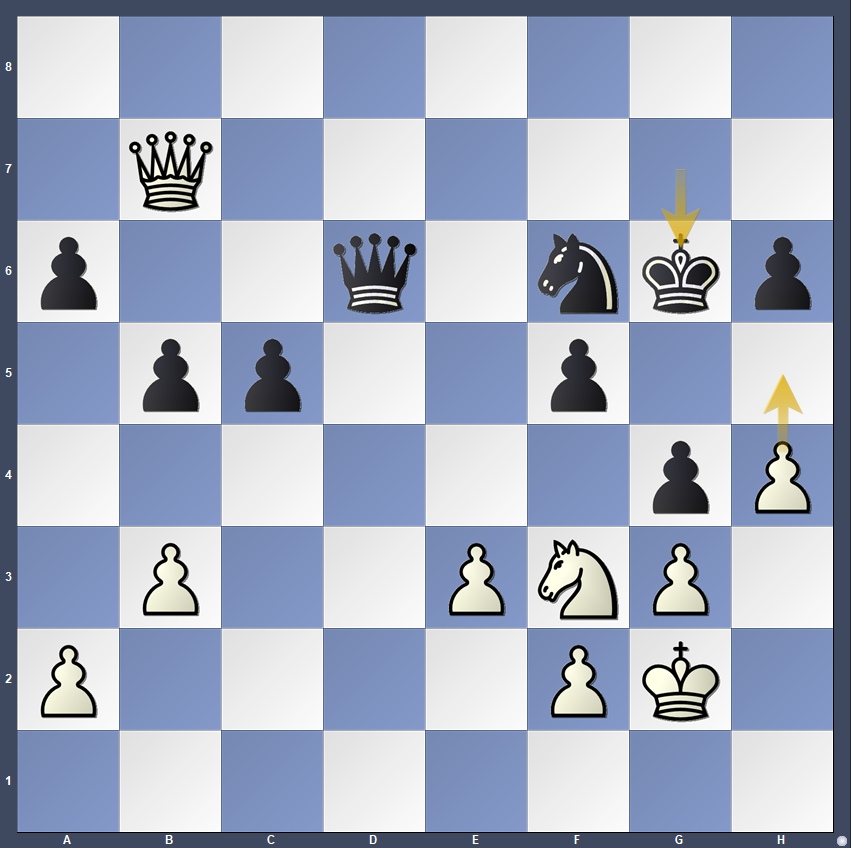
32…Kg6? allows 33.h5!+ with White’s knight springing into action and the Black king suddenly under fire. After 33…Nxh5 (33…Kxh5 runs into 34.Qf7#!) 34.Nh4+ Kg5 35.Qf7! Qf6 36.Qd5 White gets decisive advantage as Black has limited options with her king cornered.
FACT SHEET, Game 6, FIDE Women’s World Championship 2025:
White: Tan Zhongyi
Black: Ju Wenjun
Result: 0-1
Opening: English
Game length: moves
Match score: 4-2 (in favour of Ju Wenjun)
Follow FIDE’s social media channels for updates, tune into YouTube for live commentary and coverage, and visit the official match website for more information.
Written by Charlize van Zyl
Photos: Anna Shtourman
Official website: womenworldchampionship2025.fide.com/

About the Match
The 2025 FIDE Women’s World Chess Championship match between Ju Wenjun and Tan Zhongyi follows a 12-game format. The first player to score 6.5 points will be declared the winner.
The time control for each game is 90 minutes for the first 40 moves, followed by 30 minutes for the rest of the game, with an increment of 30 seconds per move starting from move 1.
If the match is tied at 6-6 after all 12 games, a tiebreak will determine the champion. The tiebreak procedure involves a series of rapid and, if necessary, blitz games to ensure a decisive outcome.


